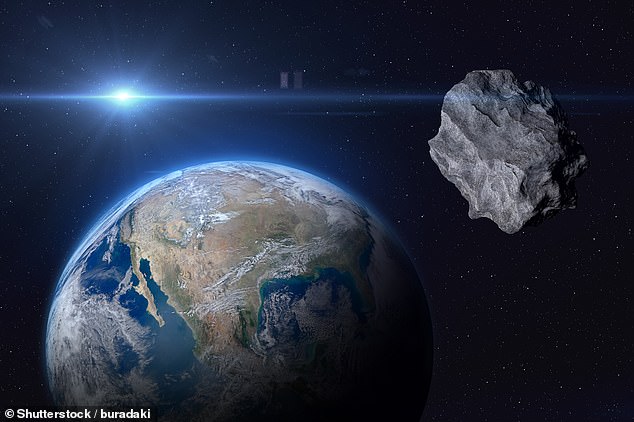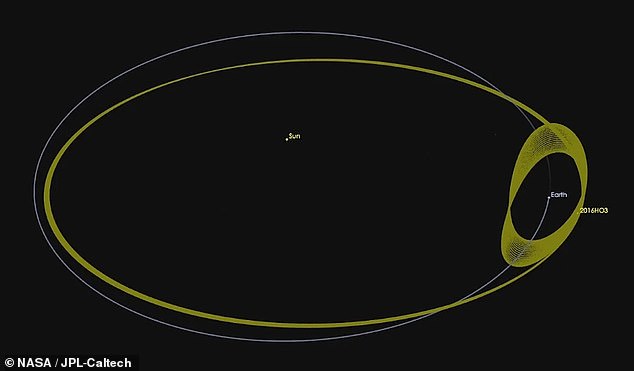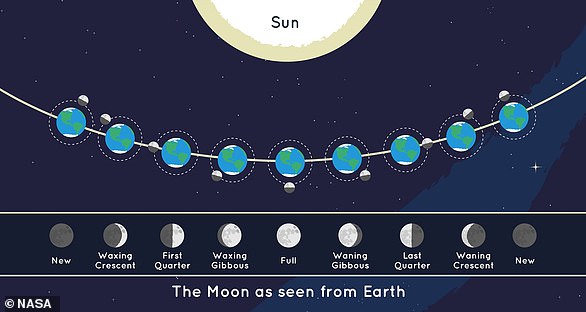For the last 4.5 billion years our planet has had a reliable celestial companion – the moon.
Its orbit around the Earth has a profound effect on life here, from influencing the tides to stabilising our seasons.
But astronomers have now discovered another sidekick that may have been following our planet around for some time.
Experts at the Pan-STARRS observatory in Hawaii have spotted a quasi-moon, called ‘2025 PN7’, that has been tagging along after Earth since the 1960s.
This cosmic body is actually an asteroid, they explained, and – rather than orbit the Earth – it is orbiting the Sun on a similar trajectory to our planet.
The astronomers made the discovery after analysing orbital data from the asteroid, which is just 19 metres (62ft) wide.
They determined it has been in a quasi-orbit for around 60 years and would likely be nearby for another 60 years or so before departing.
It joins the six other known quasi-moons in Earth-like orbits – but boasts the title of the ‘smallest and the least stable’.

Experts have spotted a quasi-moon, an asteroid called ‘2025 PN7’, that has been tagging along after Earth since the 1960s (stock image)
Scientists have been aware of quasi-satellites since 1991 when they first discovered ‘1991 VG’ – which some believed to be an alien probe at the time.
‘Over three decades later, it is now widely accepted that such objects are natural and constitute a secondary asteroid belt that occupies the region in which the Earth-moon system orbits around the sun,’ the researchers wrote.
Unlike our moon, which can usually been seen with the naked eye, this quasi-moon is only visible through good telescopes.
And although it may appear to be orbiting Earth it is not gravitationally bound to our planet.
While it may sound like this neighbour has been ‘following’ Earth for quite some time, it’s relatively short compared to another famous quasi-moon, Kamo’oalewa, which has an Earth-related orbit lasting around 381 years.
Quasi-moons are part of a special category of space objects called Arjunas, that move in sync with our planet’s journey around the sun.
2025 PN7 maintains a wide range of distances from Earth – anywhere between around 2.8 million miles (4.5 million km) and 37 million miles (59 million km).
These quasi-moons in Earth-like orbits are ‘full of surprises’ co-author Carlos de la Fuente Marcos, from the Complutense University of Madrid, told Live Science.

Earth’s orbit around the Sun (blue) contrasted with that of its quasi-moon Kamo’oalewa (yellow, labeled with its provisional designation 2016 HO3). The large yellow circle traces just one of the quasi-moon’s orbits around the Sun. Over many orbits, it also traces the series of loops around Earth shown to the right
This new quasi-moon is ‘small, faint and visibility windows from Earth are rather unfavourable, so it is not surprising that it went unnoticed for that long,’ he explained.
The Vera C. Rubin Observatory in Chile, which recently became operational, can scan for other quasi-moons and ‘may uncover many more’.
The latest discovery was recently published in Research Notes of the AAS.
Alongside quasi-moons the Earth is sometimes joined by ‘minimoons’ – objects that do orbit our planet but only temporarily.
Only four have ever been discovered, and none are still orbiting Earth.
Experts from The Planetary Society said: ‘Quasi-moons and minimoons are pieces of our neighbourhood in space, and they carry information about where they come from. They might originate in the main asteroid belt, from impacts on the Moon, or from the break-up of larger objects on similar orbits — scientists don’t know for sure.
‘Answering that question, and finding out what these almost-moons are made of, can help researchers learn more about asteroids and how they threaten Earth.’
Like Earth, the Moon has a day side and a night side, which change as the Moon rotates.
The Sun always illuminates half of the Moon while the other half remains dark, but how much we are able to see of that illuminated half changes as the Moon travels through its orbit.

In the Northern Hemisphere, the phases of the moon are:
1. New Moon
This is the invisible phase of the Moon, with the illuminated side of the Moon facing the Sun and the night side facing Earth.
2. Waxing crescent
This silver sliver of a Moon occurs when the illuminated half of the Moon faces mostly away from Earth, with only a tiny portion visible to us from our planet.
3. First Quarter
The Moon is now a quarter of the way through its monthly journey and you see half of its illuminated side.
4. Waxing Gibbous
Now most of the Moon’s dayside has come into view, and the Moon appears brighter in the sky.
5. Full Moon
This is as close as we come to seeing the Sun’s illumination of the entire day side of the Moon.
6. Waning Gibbous
As the Moon begins its journey back toward the Sun, the opposite side of the Moon now reflects the Moon’s light.
7. Last Quarter
The Moon looks like it’s half illuminated from the perspective of Earth, but really you’re seeing half of the half of the Moon that’s illuminated by the Sun ― or a quarter.
8. Waning Crescent
The Moon is nearly back to the point in its orbit where its dayside directly faces the Sun, and all that we see from our perspective is a thin curve.
Share or comment on this article:
Earth has another moon! Hidden ‘quasi-moon’ has been following our planet for decades, astronomers reveal